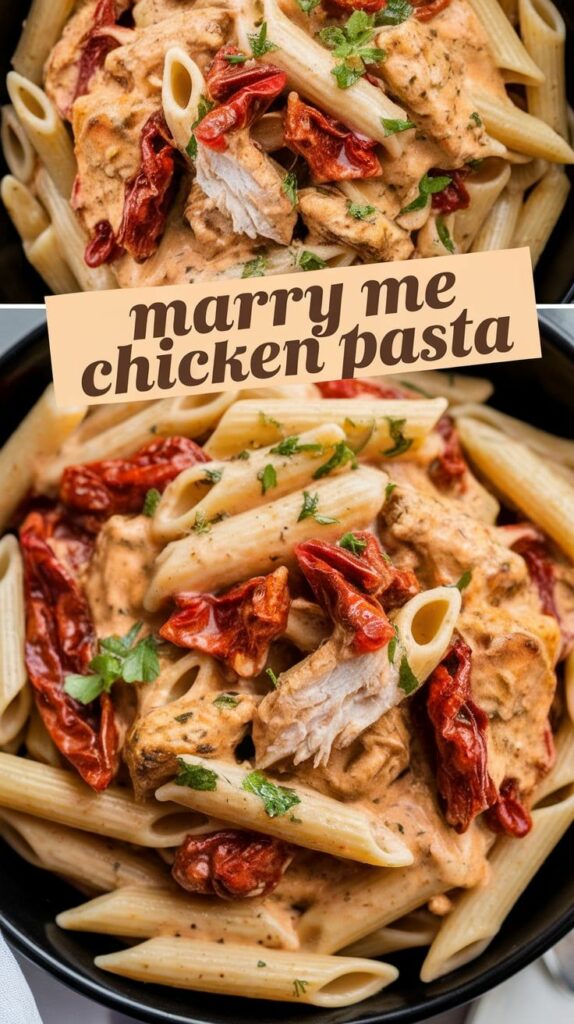Spring calls for a vibrant and zesty pasta dish that captures the season’s fresh essence. My lemon asparagus pasta recipe brings together bright citrus notes and tender green asparagus for a culinary experience that transforms an ordinary meal into something extraordinary.
This spring pasta recipe celebrates seasonal ingredients with a simple yet sophisticated approach. Each bite delivers a burst of lemon-infused flavor that complements the delicate asparagus, creating a light and satisfying dinner perfect for warm evenings.
I’ve crafted this zesty pasta dish to be both quick and elegant. Suitable for weeknight dinners or special gatherings, the recipe promises to become a staple in your kitchen. Fresh ingredients and simple techniques make this lemon asparagus pasta a go-to meal that will impress family and friends.
Why This Lemon Asparagus Pasta Recipe Will Become Your Favorite
Discovering the perfect easy pasta recipe can transform your weeknight cooking experience. My Lemon Asparagus Pasta is a game-changer that brings together fresh seasonal ingredients and incredible flavor in just minutes. This seasonal pasta dish combines the bright zesty notes of lemon with the tender crunch of spring asparagus, creating a truly flavorful pasta that will instantly become a staple in your kitchen.
Perfect Balance of Flavors
The magic of this recipe lies in its harmonious flavor profile. Fresh asparagus provides a delicate, green freshness that pairs beautifully with the sharp, citrusy punch of lemon. Each bite delivers a vibrant taste experience that feels both light and satisfying. The subtle garlic undertones and a sprinkle of Parmesan cheese elevate the dish from simple to spectacular.
Quick and Easy Preparation
Busy home cooks will love how simple this pasta comes together. From start to finish, you can have this meal on the table in under 30 minutes. The straightforward cooking process makes it perfect for:
- Weeknight dinners
- Impromptu gatherings
- Quick lunch solutions
- Meal prep options
Seasonal Ingredients at Their Best
Spring brings the most incredible asparagus, and this recipe celebrates the season’s bounty. By using fresh, locally sourced asparagus, you’ll capture the essence of spring on your plate. The recipe transforms simple ingredients into a restaurant-quality meal that highlights the natural flavors of seasonal produce.
Essential Ingredients for Your Fresh Pasta Dish
Creating the perfect lemon asparagus pasta starts with selecting high-quality pasta ingredients. I’ll walk you through the essential components that will transform your simple meal into a restaurant-worthy dish.
Fresh asparagus is the star of this recipe. You’ll want to choose bright green, firm stalks with tight, compact tips. Thin to medium-sized asparagus works best for this pasta, ensuring tender and flavorful results.
- Pasta Base:
- 1 pound linguine or spaghetti
- High-quality durum wheat pasta
- Fresh Asparagus Requirements:
- 1 bunch fresh asparagus (about 1 pound)
- Trimmed and cut into 1-inch pieces
- Lemon Pasta Sauce Components:
- 3 fresh lemons (juice and zest)
- 1/2 cup extra virgin olive oil
- 3 garlic cloves, minced
My secret to an incredible lemon pasta sauce lies in using fresh ingredients. Grate the lemon zest directly into the sauce for maximum flavor intensity. The combination of fresh asparagus and bright lemon creates a vibrant, spring-inspired dish.
| Ingredient | Quantity | Purpose |
|---|---|---|
| Parmesan Cheese | 1/2 cup, freshly grated | Adds creamy texture and umami flavor |
| Fresh Basil | 1/4 cup, chopped | Provides aromatic freshness |
| Red Pepper Flakes | 1 teaspoon | Optional heat and complexity |
Pro tip: Always use freshly grated Parmesan and avoid pre-packaged cheese. The difference in flavor is remarkable and will elevate your lemon pasta sauce from good to extraordinary.
Kitchen Tools and Equipment You’ll Need
Creating the perfect Lemon Asparagus Pasta requires more than just great ingredients. The right pasta cooking tools and kitchen equipment for pasta can make all the difference in your culinary experience. I’ll guide you through the essential tools that will help you prepare and serve this delightful dish with ease.
Pasta Cooking Essentials
To get started, you’ll need some key pasta cooking tools that are crucial for preparing the perfect pasta:
- Large stainless steel pot (at least 6-quart capacity)
- Pasta colander with sturdy handles
- Long-handled pasta server or tongs
- Pasta measuring tool or kitchen scale
Prep Work Tools
Proper kitchen equipment for pasta preparation goes beyond cooking. These tools will make your prep work smooth and efficient:
- Sharp chef’s knife
- Cutting board
- Microplane zester
- Garlic press
- Measuring cups and spoons
Serving Suggestions
To elevate your pasta serving ideas, consider these essential dining accessories:
- Large ceramic serving bowl
- Warmed pasta plates
- Parmesan cheese grater
- Elegant serving utensils
Investing in these tools will transform your pasta cooking experience and help you create restaurant-quality dishes right in your own kitchen. Each piece of equipment plays a crucial role in bringing out the best flavors and presentation of your Lemon Asparagus Pasta.
How to Choose and Prep Fresh Asparagus
Selecting the perfect asparagus is crucial for creating a delicious lemon asparagus pasta. I’ll guide you through picking the freshest spears and preparing them like a pro.
When selecting asparagus, look for bright green stalks with tight, compact tips. The spears should be firm and straight, without any signs of wilting or soft spots. Thickness doesn’t indicate quality – both thin and thick asparagus can be delicious.
- Choose asparagus with vibrant green color
- Check for firm, crisp stalks
- Avoid spears with mushy or discolored tips
- Select bunches with similar-sized stalks for even cooking
Preparing asparagus requires a few simple steps. Start by washing the spears thoroughly under cool running water. Then, trim the tough woody ends by snapping or cutting about 1-2 inches from the bottom.
| Asparagus Type | Recommended Cooking Method | Typical Preparation Time |
|---|---|---|
| Thin Spears | Quick blanching or sautéing | 2-3 minutes |
| Medium Spears | Roasting or grilling | 4-5 minutes |
| Thick Spears | Slow roasting | 6-7 minutes |
My fresh asparagus tips include storing your spears in the refrigerator wrapped in damp paper towels. This keeps them crisp and fresh for up to 3-4 days before cooking. Pro tip: treat asparagus like fresh flowers by storing them upright in a bit of water to maintain their crispness.
Step-by-Step Cooking Instructions
Creating the perfect lemon asparagus pasta requires precision and care. I’ll walk you through each stage of pasta cooking instructions to ensure a delicious meal that impresses every time.
Mastering this asparagus pasta preparation involves understanding the delicate balance between cooking techniques and ingredient harmony. Let me break down the process into simple, easy-to-follow steps.
Preparing the Pasta
- Select high-quality pasta like linguine or fettuccine
- Bring 4 quarts of salted water to a rolling boil
- Cook pasta for 8-10 minutes until al dente
- Reserve 1 cup of pasta water before draining
Creating the Lemon Sauce Recipe
My signature lemon sauce recipe transforms simple ingredients into a bright, creamy accompaniment. The key is balancing citrus and richness.
- Melt 4 tablespoons butter in a large skillet
- Add minced garlic and sauté for 30 seconds
- Squeeze fresh lemon juice (about 3 tablespoons)
- Whisk in 1/2 cup heavy cream
Combining All Components
The final step brings together our perfectly cooked pasta and vibrant lemon sauce. Timing and technique are crucial for a restaurant-quality dish.
| Ingredient | Quantity | Preparation |
|---|---|---|
| Fresh Asparagus | 1 pound | Trim ends, cut into 2-inch pieces |
| Pasta | 12 ounces | Al dente, drained |
| Lemon Sauce | 1 cup | Whisked and heated |
Gently toss pasta with asparagus and lemon sauce. Add reserved pasta water if needed for desired consistency. Garnish with fresh parmesan and chopped parsley before serving.
Tips for Perfect Al Dente Pasta Every Time
Cooking pasta perfectly is an art that transforms an ordinary dish into a culinary masterpiece. My al dente pasta tips will help you achieve that ideal texture that makes every bite memorable. The key to pasta texture advice lies in understanding the nuanced balance between cooking and timing.
Mastering al dente pasta requires attention to several critical details. Start by choosing the right pot and using plenty of salted water. The water should taste like the sea – this helps season the pasta from the inside out. I recommend using about 1 tablespoon of salt per pound of pasta.
- Use a large pot with ample water to prevent pasta from sticking
- Maintain a rolling boil throughout cooking
- Stir pasta frequently during the first few minutes
- Test pasta 1-2 minutes before the package recommended cooking time
The most crucial moment in cooking pasta perfectly is determining the exact moment of doneness. I always recommend the bite test: remove a strand and bite into it. Al dente pasta should have a slight resistance at the center but not taste raw or chalky. This technique ensures your pasta maintains a perfect texture that complements your sauce.
Drain your pasta immediately when it reaches al dente and reserve a small amount of pasta water. This starchy liquid can help bind your sauce and prevent the pasta from becoming dry or sticky.
Practice makes perfect when it comes to pasta texture advice. Don’t be discouraged if your first attempts aren’t flawless. With time and these al dente pasta tips, you’ll create restaurant-quality pasta every single time.
Variations and Ingredient Substitutions
Exploring pasta recipe variations allows you to transform this classic Lemon Asparagus Pasta into a versatile dish that suits different tastes and dietary needs. By making simple adjustments, you can create a meal that’s both delicious and personalized.
Gluten-Free Pasta Options
For those seeking gluten-free pasta options, several alternatives can work perfectly with this recipe:
- Chickpea pasta – high in protein and fiber
- Brown rice pasta – mild flavor and great texture
- Quinoa pasta – nutrient-dense and gluten-free
When using gluten-free pasta, cook it slightly less than traditional wheat pasta to maintain the best texture.
Protein Additions
Enhance your seasonal pasta recipes by incorporating protein-rich ingredients:
- Grilled chicken breast – sliced and added on top
- Sautéed shrimp – for a seafood twist
- Pan-seared tofu – vegetarian protein option
- Crispy pancetta – for meat lovers
Seasonal Adaptations
Adapt this recipe throughout the year by replacing asparagus with seasonal vegetables:
| Season | Vegetable Substitute |
|---|---|
| Summer | Zucchini or yellow squash |
| Fall | Roasted butternut squash |
| Winter | Roasted Brussels sprouts |
Each substitution brings unique flavors while maintaining the dish’s core essence.
Storage and Reheating Guidelines
Storing pasta leftovers can be tricky, but with the right techniques, your Lemon Asparagus Pasta will stay delicious for days. I recommend transferring the pasta to an airtight container and refrigerating within two hours of cooking. The dish will maintain its best quality for up to three days when properly stored.
When it comes to reheating pasta dishes, I suggest using a gentle approach to preserve the texture of the asparagus and prevent the sauce from separating. My favorite method is to use a skillet with a splash of water or extra olive oil. Heat the pasta on medium-low, stirring occasionally to ensure even warming. For pasta meal prep, you can also reheat individual portions in the microwave, covering the dish to retain moisture.
To refresh the flavors of your leftover pasta, I like to add a fresh squeeze of lemon juice or a drizzle of extra virgin olive oil just before serving. This simple trick helps revive the bright, zesty notes of the original dish. Remember that asparagus can become mushy if overheated, so aim for a quick, gentle reheating process that keeps the vegetables crisp and the sauce creamy.
Pro tip: If the pasta seems dry after refrigeration, don’t worry. A little extra olive oil or a splash of pasta water can help restore the sauce’s original consistency. Enjoy your meal prep creation with the same fresh taste as the day you made it!



